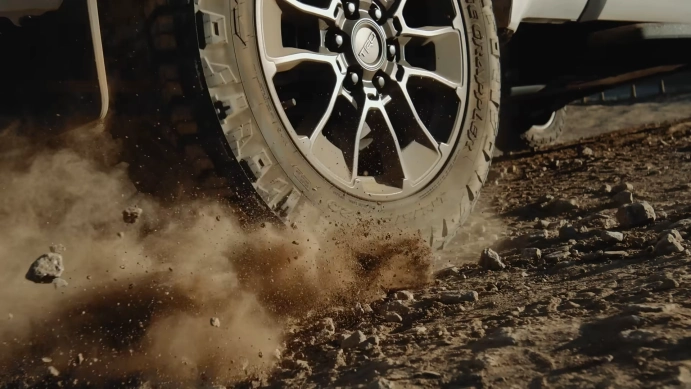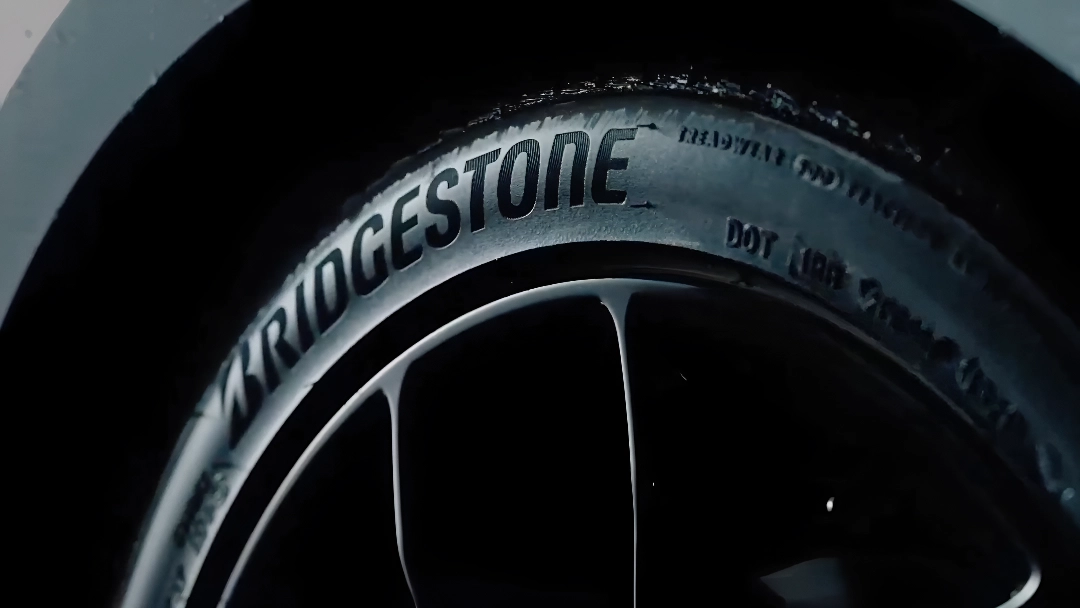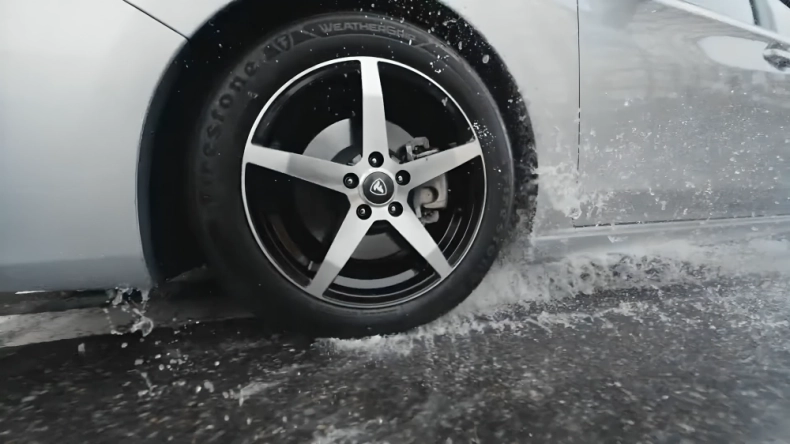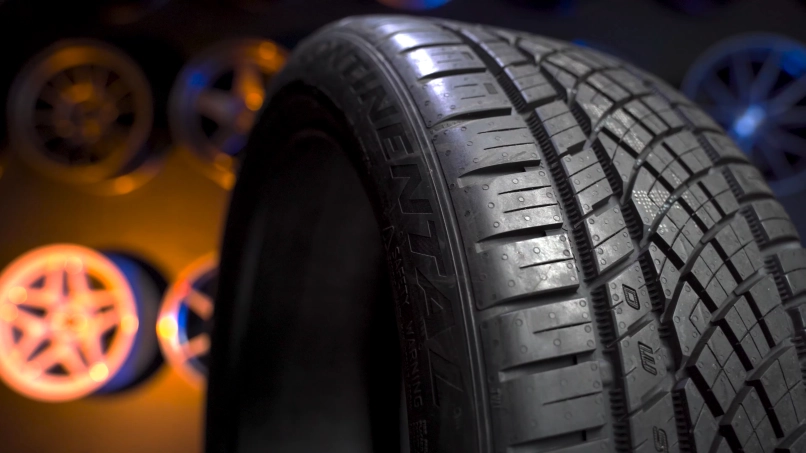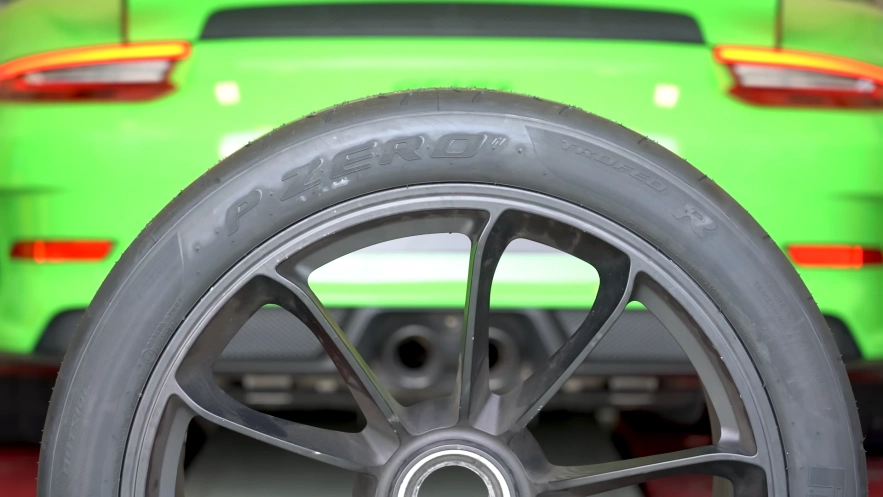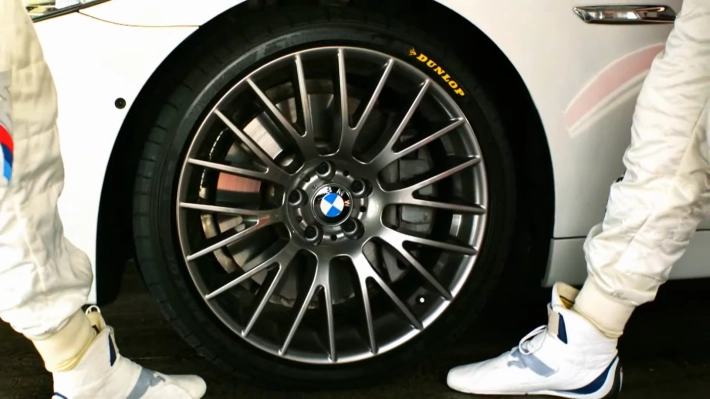Some all-terrain tires talk a big game; the Ridge Grappler shows up with muddy boots, a calm highway demeanor, and a résumé full of weekend trails. Built as a true “hybrid-terrain” tire—slotting between an A/T and an M/T—it’s aimed at drivers who daily their truck or SUV yet still want real bite when the pavement ends.
If your life alternates between jobsite gravel, interstate hauls, and forest service roads, this tire’s mission is simple: keep you rolling confidently, comfortably, and for a long time.
Brief History
Nitto’s Grappler family has long covered the spectrum from mild all-terrain to full mud-terrain. The Ridge Grappler arrived to bridge the gap between those worlds, delivering a tread design aggressive enough for ruts and rock, yet civil enough for long commutes and towing.
Earlier choices forced a compromise—either the road-friendly manners of a tame A/T with limited mud capability, or the claw-first attitude of an M/T with road noise and vague on-center feel.
The Ridge Grappler was engineered to pluralize that choice: a tougher carcass, deep self-cleaning voids, and staggered shoulders for off-road traction, paired with variable-pitch tread geometry to keep drone in check. Its quick rise in popularity traces to that split personality—equal parts smart and tough—which made it the default fit for countless daily-driven rigs that also see trails on weekends.
When a tire is born to live in two worlds, the details either make it sing—or show the seams; the Ridge Grappler’s tech tells the story.
Technologies and Construction
The Ridge Grappler doesn’t simply stack features together; it’s engineered as a cohesive system where every design choice supports both off-road durability and on-road comfort.
Think of it as a tire that refuses to settle for trade-offs—it delivers composure on asphalt while still digging deep into loose ground when adventure calls.
Dynamic hybrid tread pattern
This is the Ridge Grappler’s core identity. The central blocks interlock to stabilize the contact patch at speed, while the surrounding voids open pathways for clearing loose material.
On-road, the architecture limits tread squirm so steering inputs feel clean and predictable. Off-road, the alternating channels give mud and gravel a clean exit, preserving bite for the next rotation.
The result is unusually consistent feedback, whether you’re merging onto the highway or creeping up a shale climb.
Variable-pitch tread blocks
Instead of repeating a single block size and angle, the pattern uses a spectrum of lengths and orientations. That staggered “pitch” spreads acoustic energy across frequencies so waves partially cancel each other.
In plain English: less monotone hum, more cabin conversation at 120 km/h. The added benefit is stability—because those pitch changes also break up harmonic vibrations that can make aggressive treads feel nervous on-center.
Stone ejectors and self-cleaning channels
Raised ridges and tapered groove walls help eject trapped stones before they drill into the rubber or wedge in the voids.
That protects the casing from punctures on gravel roads and keeps the tread open for consistent clawing in the next patch of loose dirt. It also reduces the “stone orchestra” you sometimes hear when pulling back onto pavement after a trail.
Staggered shoulder lugs with step blocks
The outer shoulders are where hybrid tires earn their keep. Nitto alternates lug sizes and builds in step features, creating extra biting edges to hook in ruts or claw out of off-camber ledges.
Crucially, the shoulders transition into a more continuous edge on-road, so you get lateral support without the vague roll sometimes seen in blocky M/T designs.
Reinforced block foundation and robust carcass
Under each tread element sits a reinforced foundation that limits deflection under braking, towing, or high loads. The stiffer base makes the contact patch behave like a single, coherent “platform,” which improves braking feel and shortens the delay between steering input and vehicle response.
It’s one reason the Ridge Grappler feels unusually planted when hauling or running at highway pressures.
Dual-sidewall styling and cut-chip-resistant compound
Each casing carries two distinct sidewall designs—one milder, one bolder—so you can choose the look you want when mounting.
The rubber blend prioritizes cut- and chip-resistance for rocky terrain without turning into a hockey puck in everyday temperatures. Full-depth features preserve traction as the tire wears, keeping the on-/off-road balance intact deeper into its life.
Tech is promising, but the road (and trail) is where promises are kept—let’s drive it hard in the numbers that matter.
Performance Analysis
The Ridge Grappler proves itself where it matters most: on the road and trail. Every design choice shows up in the way it grips, balances, and adapts, giving drivers confidence whether they’re cruising on pavement or clawing through loose ground.
Dry grip and highway stability
On pavement, the reinforced block foundation and solid central ribs keep the contact patch flat and composed. Lane changes feel decisive rather than floaty, and the tire resists the “tread walk” that can creep into aggressive patterns.
Braking stays linear; there’s less rubber squirm before the lugs bite, which is noticeable in heavy trucks and SUVs with higher centers of gravity.
Wet traction and hydroplaning resistance
Zig-zag siping and broad water channels help the Ridge Grappler shed standing water, and initial pedal feel in the rain is secure.
Still, this is a hybrid terrain tuned for durability, so in colder rains, you may sense longer stopping distances compared with a road-biased A/S or a severe-snow A/T. Treat it like the capable truck tire it is: leave space, brake straight, and avoid abrupt throttle in near-freezing downpours.
Light snow and winter manners
The Ridge Grappler is not severe-snow (3PMSF) rated. Packed-snow traction is serviceable with smooth inputs and appropriate pressures, but deep snow and ice are better handled by dedicated winters or snow-rated A/Ts.
In true winter regions, the smartest play is a seasonal swap; everywhere else, mindful driving keeps things predictable.
Dirt and gravel control
On hard-packed dirt and freshly graded gravel, the tire feels locked down. The staggered shoulders and step blocks help the front end “key” into the surface, while the center blocks maintain forward drive without hunting.
Stone ejectors earn their keep on long fire roads by keeping grooves open and the carcass protected.
Rocky trails aired down
Drop the PSI, and the carcass flexes progressively, wrapping around edges without feeling rubbery. The shoulder lugs add mechanical interlock on ledges, and the sidewall protects against scuffs.
You won’t confuse it for a dedicated rock-crawler tire, but for overland-style routes and moderate crawling, grip and composure are confidence-inspiring.
Mud and clay evacuation
In shallow to moderate mud, the alternating grooves and stepped lugs clear surprisingly well, maintaining momentum where tamer A/Ts stall.
In deep gumbo, a true M/T still wins on forward bite and self-cleaning speed, but the Ridge Grappler narrows that gap more than most hybrids—especially if you carry momentum and pick smart lines.
Noise and ride quality
The variable-pitch tuning works. For such an aggressive shoulder, the drone is impressively subdued on coarse asphalt. Ride is firm—particularly in LT E/F loads at higher pressures—but body motions are well controlled, so the truck feels tied down rather than floaty. Daily commuting isn’t a chore, and longer highway runs remain pleasantly calm.
Treadlife and wear patterns
Hybrid patterns can heel-and-toe on the shoulders if neglected, but the Ridge Grappler’s block support keeps wear more even when rotations are on schedule.
Expect strong mileage for the category, especially if you watch pressures relative to load and keep alignment within spec.
Load capacity, towing feel, and fuel economy
With broad sizing and multiple load ranges, the Ridge Grappler pairs well with towing and payload use. Heavier LT sizes sharpen on-center feel at the expense of ride softness.
Rolling resistance is in line with aggressive A/Ts; don’t buy it for economy, but set pressures properly, and you won’t feel penalized at the pump.
Now let’s see how it stacks up against the usual suspects.
Comparison to Competitors
Let’s see how the Nitto Ridge Grappler stacks up against its fiercest rivals.
Nitto Ridge Grappler vs. BFGoodrich All-Terrain T/A KO2
• On-Road Noise & Comfort
The Ridge Grappler is typically quieter at highway speeds thanks to its variable-pitch tread, which spreads and softens the hum you often hear from blocky patterns. Cabin conversation stays easy on coarse asphalt.
The KO2 rides firmer and can drone more on certain surfaces, though some drivers like its “buttoned-down” feel on-center.
• Winter Poise & All-Weather Confidence
KO2 carries the 3PMSF severe-snow rating and feels more secure in cold slush and packed snow, especially as temperatures dip.
The Ridge Grappler manages light snow respectably, but it isn’t severe-snow rated; in frequent winter conditions, you’ll want dedicated winters or a snow-rated A/T.
• Durability & Treadlife
Both are robust, but they express it differently. KO2’s long-standing reputation for sidewall toughness and slow, even wear is well earned.
The Ridge Grappler resists chipping and stone drilling effectively and wears evenly with rotations—particularly strong under towing—while staying more civil day to day.
Assessment:
Choose the KO2 if winter traction and a tank-like carcass are top priorities.
Pick the Ridge Grappler if you value quieter commuting and planted highway manners without giving up real trail capability.
Nitto Ridge Grappler vs. Falken Wildpeak A/T3W
• All-Weather & Snow
Wildpeak A/T3W leans into cold-weather confidence with its 3PMSF rating and dense siping; it’s a safer bet where winters are long.
Ridge Grappler holds its own in mixed conditions, but its sweet spot is fair-weather versatility and weekend trails rather than frequent deep cold.
• Highway Manners & Steering
Ridge Grappler’s reinforced block foundation keeps the contact patch calm, delivering crisp on-center feel and low cabin noise for a tire this aggressive.
Wildpeak rides slightly softer and feels relaxed over expansion joints, though steering isn’t quite as taut at interstate speeds.
• Off-Road Bite & Clearing
In shallow mud, ruts, and loose rock, the Ridge’s stepped shoulders and self-cleaning channels dig and clear a touch faster, especially when aired down.
The Wildpeak is superb on gravel and graded fire roads but gives up a bit of “claw” in sloppy sections compared with the Ridge.
Assessment:
Choose Wildpeak A/T3W if you need an all-weather workhorse with winter chops.
Go Ridge Grappler if you want a quieter commute and a more assertive bite when the pavement ends.
Nitto Ridge Grappler vs. Toyo Open Country R/T Trail
• Off-Road Aggression
Toyo R/T Trail leans closer to a mud-terrain with bigger voids and pronounced shoulder scoops that sling muck and grab ledges.
Ridge Grappler counters with very usable trail traction while staying noticeably more composed when you air back up and head home.
• Highway Quiet & Daily Use
The Ridge Grappler’s variable-pitch tuning keeps drone impressively low for its stance, making it easier to live with on long hauls.
Toyo’s more open pattern can sing on coarse chipseal, trading a bit of serenity for extra bite off-road.
• Towing & Load Stability
Both are stout under tongue weight, but the Ridge’s block foundation and on-center stability shine during highway towing.
Toyo’s casing feels rock-solid when you cycle pressures for trail days, then reinflate—great for builds that see frequent off-road duty.
Assessment:
Pick Open Country R/T Trail if your weekends skew gnarlier and you prioritize maximum trail aggression.
Choose the Ridge Grappler if you want strong dirt performance with the quiet, planted demeanor that makes daily driving and towing less tiring.
Tire comparisons clarify the trade-offs: the Ridge Grappler wins on day-to-day quiet and highway composure while keeping real trail grit, whereas rivals tilt toward winter specialization, pure durability, or extra off-road ferocity.
With priorities set, the right choice becomes obvious—and the rest of your setup can follow suit.
Now let’s answer the questions that always come up before the checkout page.
Frequently Asked Questions
Q: Is the Ridge Grappler 3PMSF (severe-snow) rated?
A: No. It’s an all-season hybrid terrain. In regions with sustained sub-freezing temps, consider a dedicated winter or a snow-rated A/T for safer stops and starts.
Q: How quiet is it on the highway?
A: Impressively quiet for the aggression you see. The variable-pitch pattern spreads noise so you hear less drone at cruising speeds.
Q: How does it handle wet roads?
A: Confident in typical rain with good evacuation, but in colder rains, braking distances can increase versus road-biased or 3PMSF A/T tires. Drive with margin when temps drop.
Q: Can I tow with this tire?
A: Yes. LT Load Range E/F sizes provide stout carcass control and a stable on-center feel. Set pressures according to actual axle loads.
Q: What about treadlife and warranty?
A: Expect strong life for a hybrid terrain when rotations are on schedule. Many P-metric/XL sizes include a mileage warranty; LT coverage varies by size.
Q: Does it come in my size?
A: Likely. The lineup spans common 17–24″ fitments for trucks and SUVs in multiple widths and load ranges. Verify the diameter and clearance for your setup.
Q: Which sidewall design do I get?
A: Both are molded into the tire; you choose which faces outward at mounting time.
Q: How should I set PSI for daily driving vs. trails?
A: Start with the door-jamb spec for daily use. Off-road, air down for traction and comfort—then air back up before highway speeds.
Questions answered, the decision shifts from “if” to “how it fits your life”—and the pros and cons make that calculus simple.
Pros & Cons
Choosing a tire always means weighing strengths against trade-offs. Here’s a clear snapshot of what makes the Ridge Grappler shine—and where it asks for a bit of compromise.
Pros
- Quiet for a trail-capable design.
- Strong off-road bite from step blocks.
- Stable on highways, even under load.
- Stone ejectors protect traction.
- Dual-sidewall styling looks great.
- Cut- and chip-resistant compound.
- Wide size and load coverage.
- Predictable when aired down.
- Even wear with rotation.
- Confident on dirt and gravel.
Cons
- Not severe-snow rated.
- Wet stops longer in cold conditions.
- Heavier LT sizes firm the ride.
- Deep gumbo mud favors M/T tires.
Strengths are stacked for everyday trucks that moonlight off-road; weaknesses are the predictable costs of that dual-mission brief.
Real-World Feedback
Truck and SUV owners consistently praise the Ridge Grappler’s split personality: road-trip quiet with trail-day grit. Daily drivers appreciate the calm on-center feel and the way it shrugs off coarse asphalt, while weekend explorers value the reliable bite in ruts, loose rock, and shallow mud—especially when aired down.
Towing stability receives frequent compliments, and many note how rotations keep the wear tidy over long mileage.
That said, owners also call out its narrower winter lane. In colder rains and true freeze-thaw cycles, braking distances can increase, and drivers in snow-belt states often switch to dedicated winter tires or 3PMSF A/Ts once temperatures drop.
As a hybrid terrain, the Ridge Grappler prioritizes durability and off-road resilience over four-season finesse, and it’s best when you play to those strengths.
Key Takeaways:
- Many truck and SUV owners praise the Ridge for delivering quiet highway manners without sacrificing off-road bite.
- Stability under load and while towing is a standout trait, especially in LT load ranges.
- Wet performance is confident in typical rain, but several drivers report longer stops in near-freezing conditions.
- Air-down composure on rocky climbs builds confidence for overland-style trails.
- Routine rotations and correct pressures pay big dividends in wear and feel.
With a clear picture of real-world behavior, the last 10% of performance is unlocked by simple, smart maintenance.
Quick Maintenance Tips
- Rotate every 8,000–10,000 km (or at each oil change) to prevent heel-and-toe shoulder wear.
- Set pressures by actual load, not habit—use door-jamb as a baseline and adjust for cargo or towing.
- Keep alignment in spec; aggressive shoulders magnify toe and camber errors.
- After trail days, rinse out caked mud and gravel to preserve balance and avoid embedded stones.
- In snowy regions, adopt a seasonal tire strategy to improve safety and extend tread life.
- Air down thoughtfully for trails, then inflate again before highway speeds to protect the casing and restore handling.
- Inspect sidewalls regularly—hybrid terrains see more curb and rock contact than touring tires.
Dialed-in maintenance lets the Ridge Grappler be its best self—weekday commuter, weekend scrambler, year after year.
Final Thoughts
The Nitto Ridge Grappler nails the hybrid brief: civil on weekdays, capable on weekends. It’s the tire you buy when you want bold shoulder bite and trail confidence without the highway headache of a full mud-terrain.
Keep expectations straight—this isn’t a severe-snow specialist or a rain-hawking touring tire—and it will reward you with quiet cruising, stout towing manners, and real off-road traction that feels equal parts smart and tough. If your use case is 70% pavement, 30% dirt (with the occasional sloppy detour), the Ridge Grappler’s blend of calm, control, and claw is as compelling as it gets in the hybrid-terrain class.
And that’s the beauty here: no drama on Monday, no excuses on Saturday.

